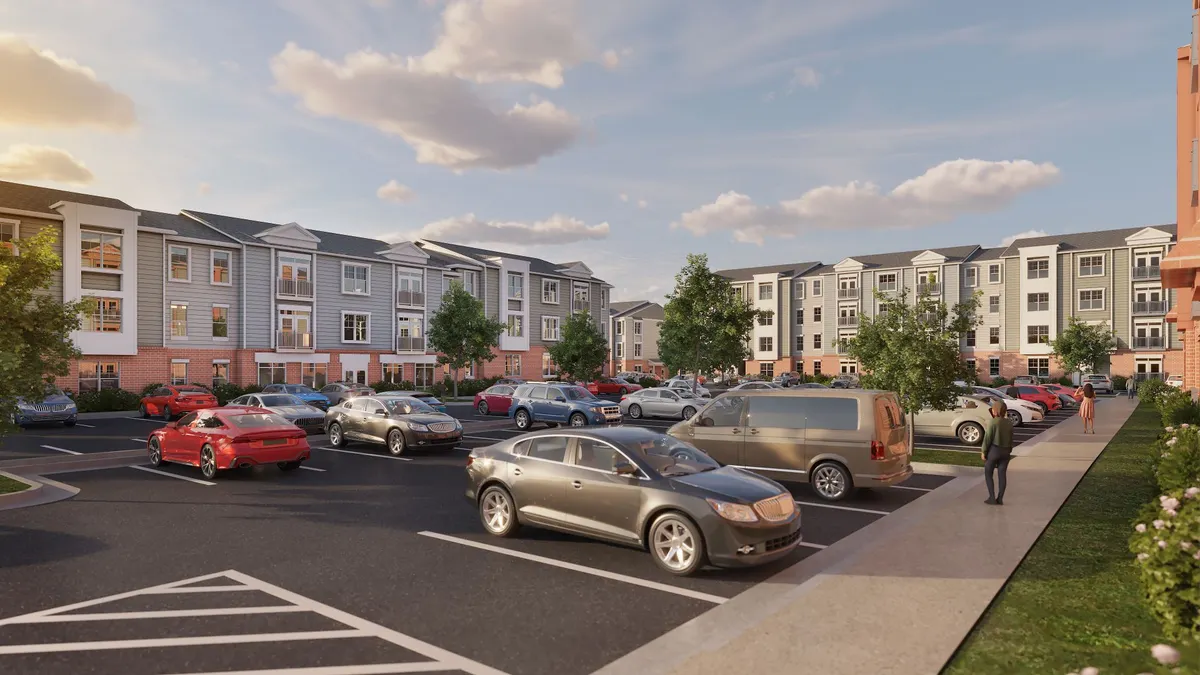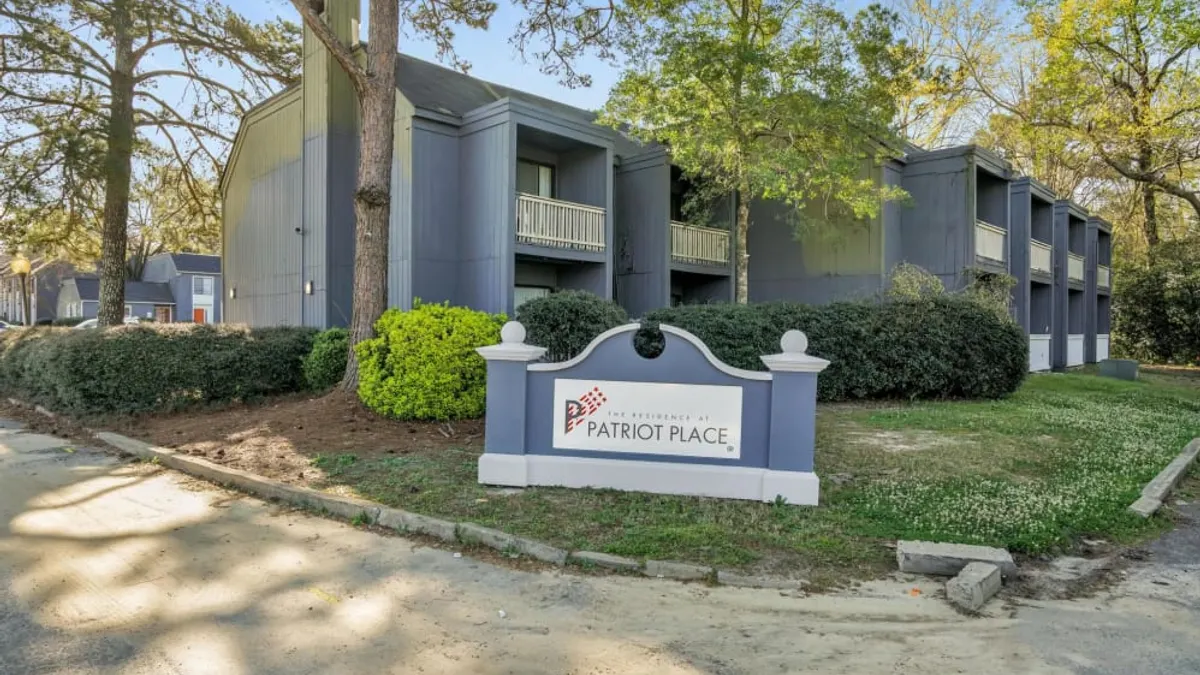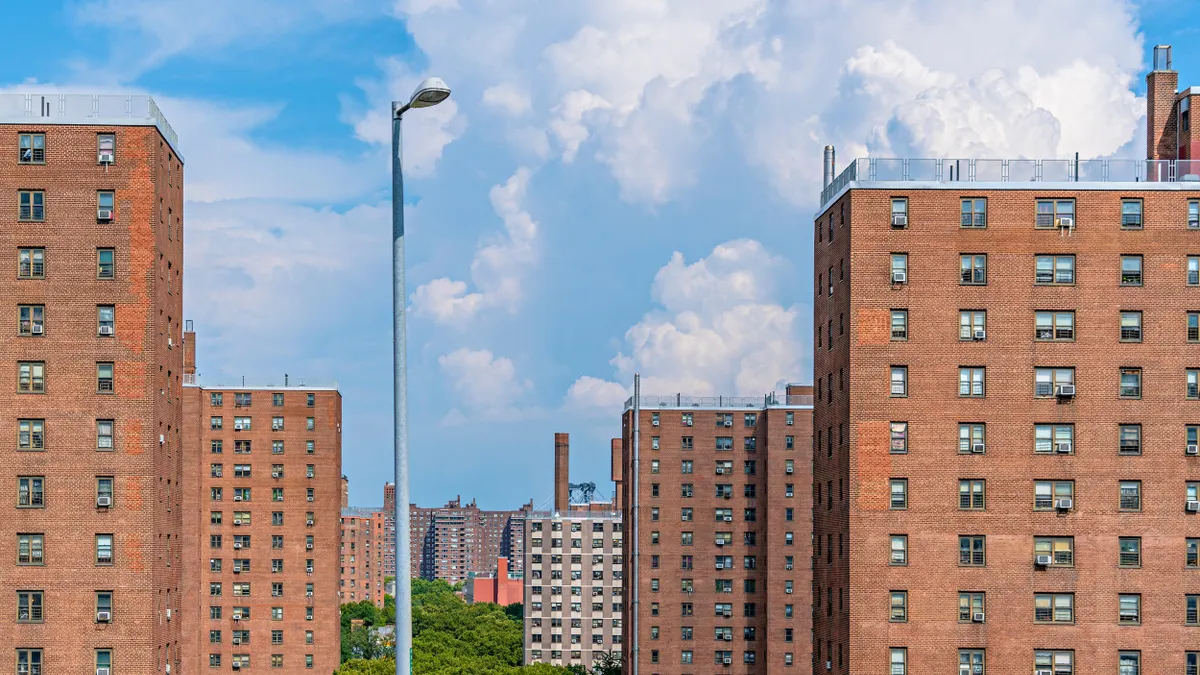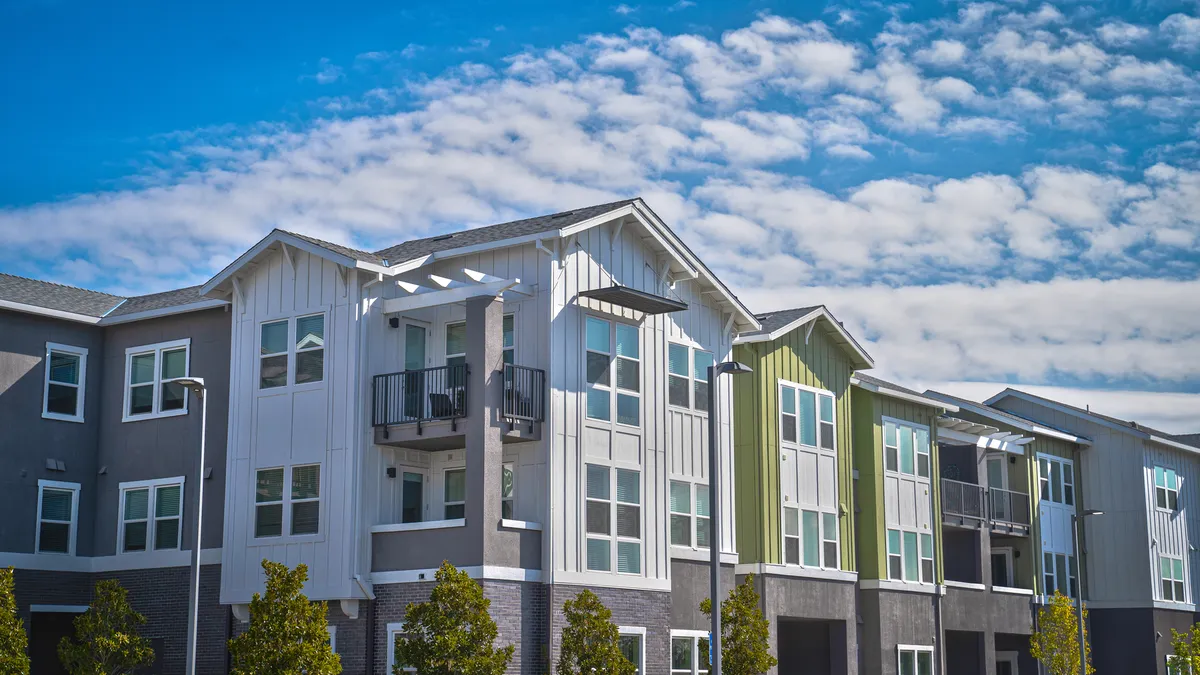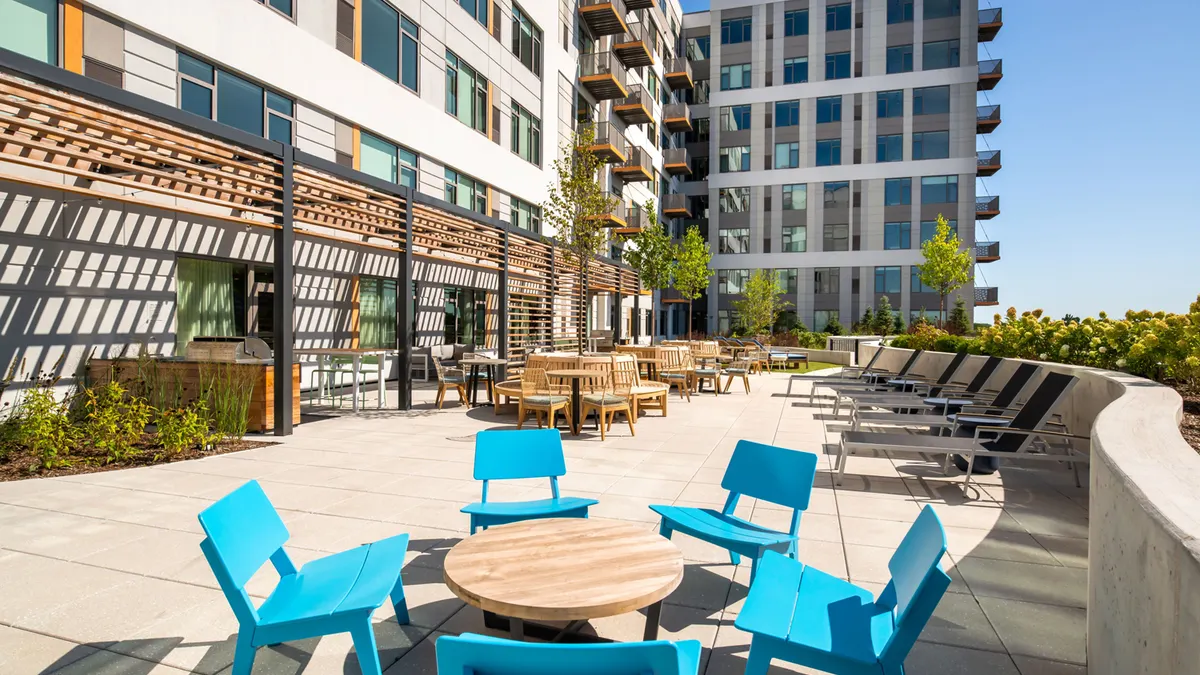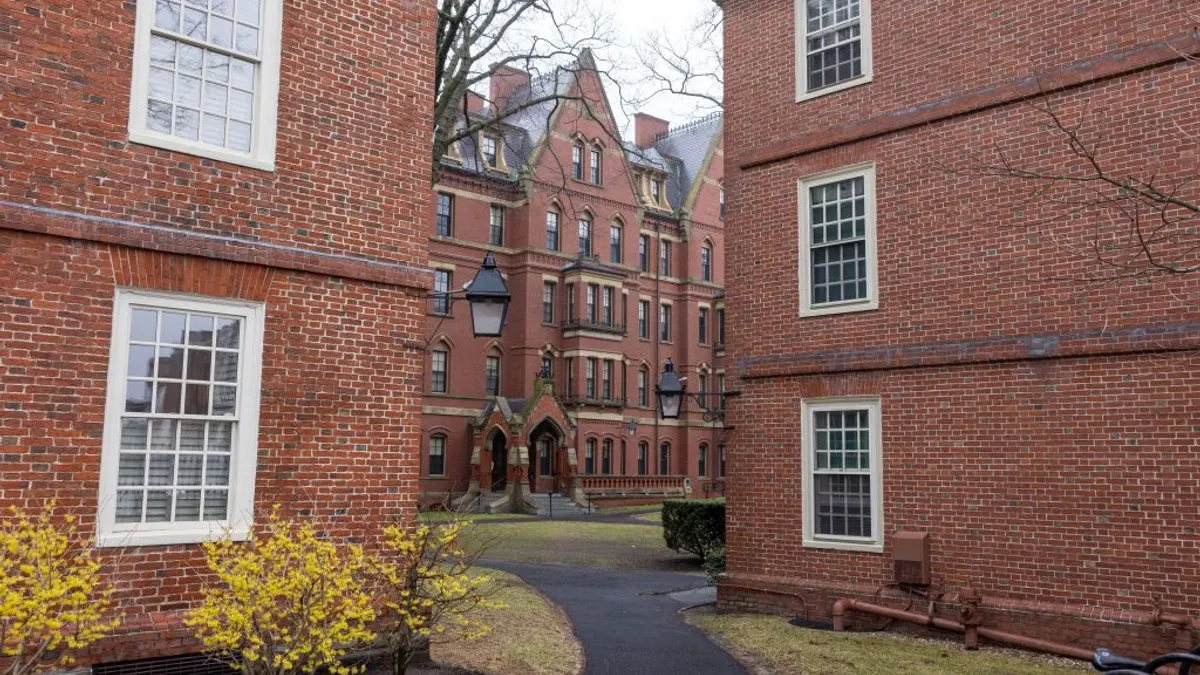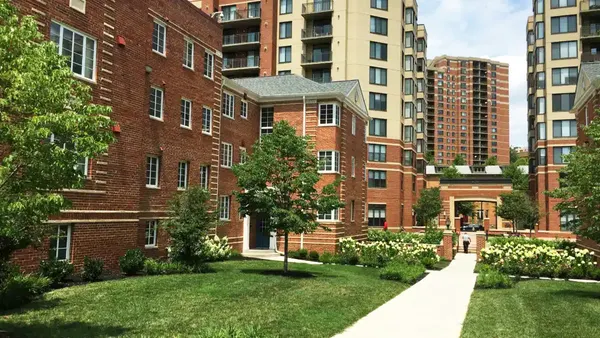At a time when affordable housing is growing ever more difficult to finance, Standard Communities is undergoing a significant expansion.
The Los Angeles-based affordable housing owner, operator and developer has increased its staff by over 50% and added 10,000 new units to its portfolio since 2023, bringing its total up to 27,000 units owned and operated. It presently has over $1.5 billion in new affordable units in the pipeline and $1 billion in existing deals underway.
Among Standard’s newest leadership hires is Caitlin Gossens, who joined as vice president of capital markets in its New Construction division. Previously an executive director of New York City-based JPMorgan Chase Bank’s Community Development Division, Gossens has originated over $1.5 billion of construction and permanent debt for the development or preservation of more than 6,500 affordable housing units.

At Standard, she is set to lead capital-raising projects for the company, as well as maintain relationships with investors and oversee all financing aspects throughout the lifecycle of a project, according to a press release. Among the driving forces behind her work is the need to scale up affordable housing development.
“Last year, the largest home builder in the nation built 300,000 units of single-family homes, and the biggest affordable housing developer built 3,000 units,” Gossens told Multifamily Dive. “That’s a huge divide, and Standard is trying to take the new construction platform to address that.”
Here, Gossens talks with Multifamily Dive about the state of affordable housing finance, building without relying on subsidies and the company’s newest development markets.
This interview has been edited for brevity and clarity.
MULTIFAMILY DIVE: Can you tell us about your role and your plans for the near future?
CAITLIN GOSSENS: We all know that it's really challenging to build affordable housing, and often you're relying on scarce resources. We're trying to bring really creative solutions to the affordable housing landscape.
Most of the areas that we are working in are going to be suburban areas with high income, and where we can finance projects using just debt and equity. Most of our deals will be large, 4% bond deals with 200-plus units utilizing just low-income housing tax credits and debt. So we're not having to wait in line for public resources.
Are there any particular markets that you're targeting for these new developments?
We have a pretty robust pipeline on the new construction side — almost 4,000 units. A majority of the properties are going to be in the Mid-Atlantic region right now. Maryland is a particular focus, along with North Carolina, Virginia and California. And then we have some one-off deals in Huntsville, Alabama; Providence, Rhode Island; and Kansas City, Missouri.
We’ll hopefully have a few deal closings this year as well as next year. We closed on Jefferson Plaza Apartments in 2024, which was a large project in Woodbridge, Virginia, 240 units. And then we had a deal in Hawaii close earlier this year. It's 127 units. And then the next few deals should hopefully close, probably close to 600 to 1,000 units in the next six to 12 months.
The team's been operating pretty lean the last few years. It's quite impressive the amount of work that they've done to build this pipeline and to find good sites and to honestly help solve the affordable housing crisis without relying on federal subsidies.
How do you anticipate supporting and expanding the new construction unit in your new role?
I joined as the head of capital markets. In my prior role, I was doing construction and firm financing for multifamily affordable housing at JPMorgan. Standard was actually a client of mine at that role. I joined Standard to help build this platform.
I see a couple of different ways that hopefully I can help. One, by bringing creative and solution-oriented ideas to these sorts of projects — when you're only working with debt and equity, it's really challenging to build affordable housing. And two, finding the right partners that can be at the table with you.
Offering the same sort of creative solutions and collaborative approach is, I think, going to be really important for us. So we'll be cultivating and building those relationships on the debt and the equity side with both existing and new financing partners.
What are some of the biggest challenges you anticipate in finding these partnerships, and how do you plan to overcome them?
Every single year in the affordable housing financing world, we keep saying, “Oh, this is unprecedented,” or, “We’ve never seen this before, things are getting harder and harder.” And it's almost like whiplash. What's the flavor of the day? Is it tariffs? Is it rates?
There's a lot to be seen in the next six months. We’re going to adapt quickly and nimbly to any sort of tax reform, and then also just continue to monitor and watch interest rates, as well as keep construction pricing in check. I think construction pricing has stabilized over the last 12 months, and we're not seeing as many impacts to pricing as we saw during COVID in previous years.
How will the recent passage of the federal budget bill affect the affordable housing sector?
The affordable housing provisions included in the 2025 tax reform bill represent a significant win for the affordable housing industry. As the largest expansion of the low-income housing tax credit program since its creation in 1986, the provisions are projected to help finance an additional 1.22 million affordable homes over the next decade, according to Novogradac.
However, the primary challenge resulting from this legislation will be maintaining an appropriate balance between supply and demand within the LIHTC market. The reduction of the bond financing threshold should enable more 4% credit projects to proceed in states with constrained bond cap allocations, potentially increasing the supply of credits available to the market. At the same time, provisions such as permanent bonus depreciation may strengthen investor demand and improve equity pricing for projects.
As these provisions take effect, investor appetite for LIHTC equity may fluctuate, requiring the market to absorb and adapt to the evolving policy landscape. Ultimately, the greatest challenge will be ensuring the market can efficiently respond to this historic expansion and translate it into new, high-quality affordable housing at the scale intended.


